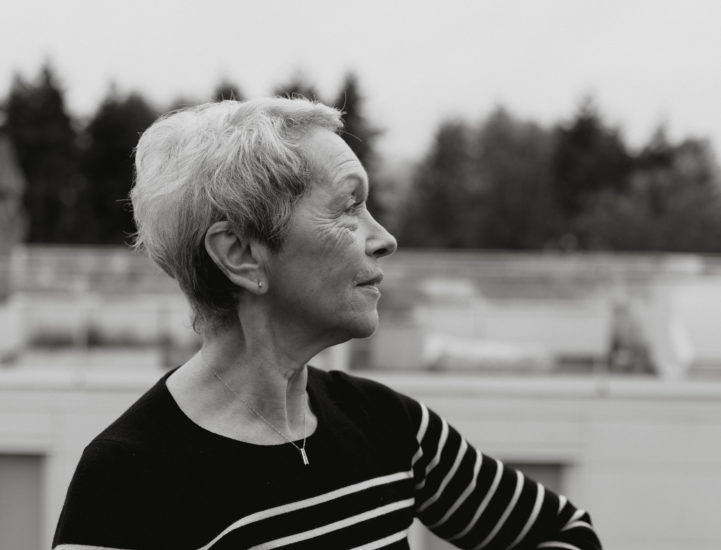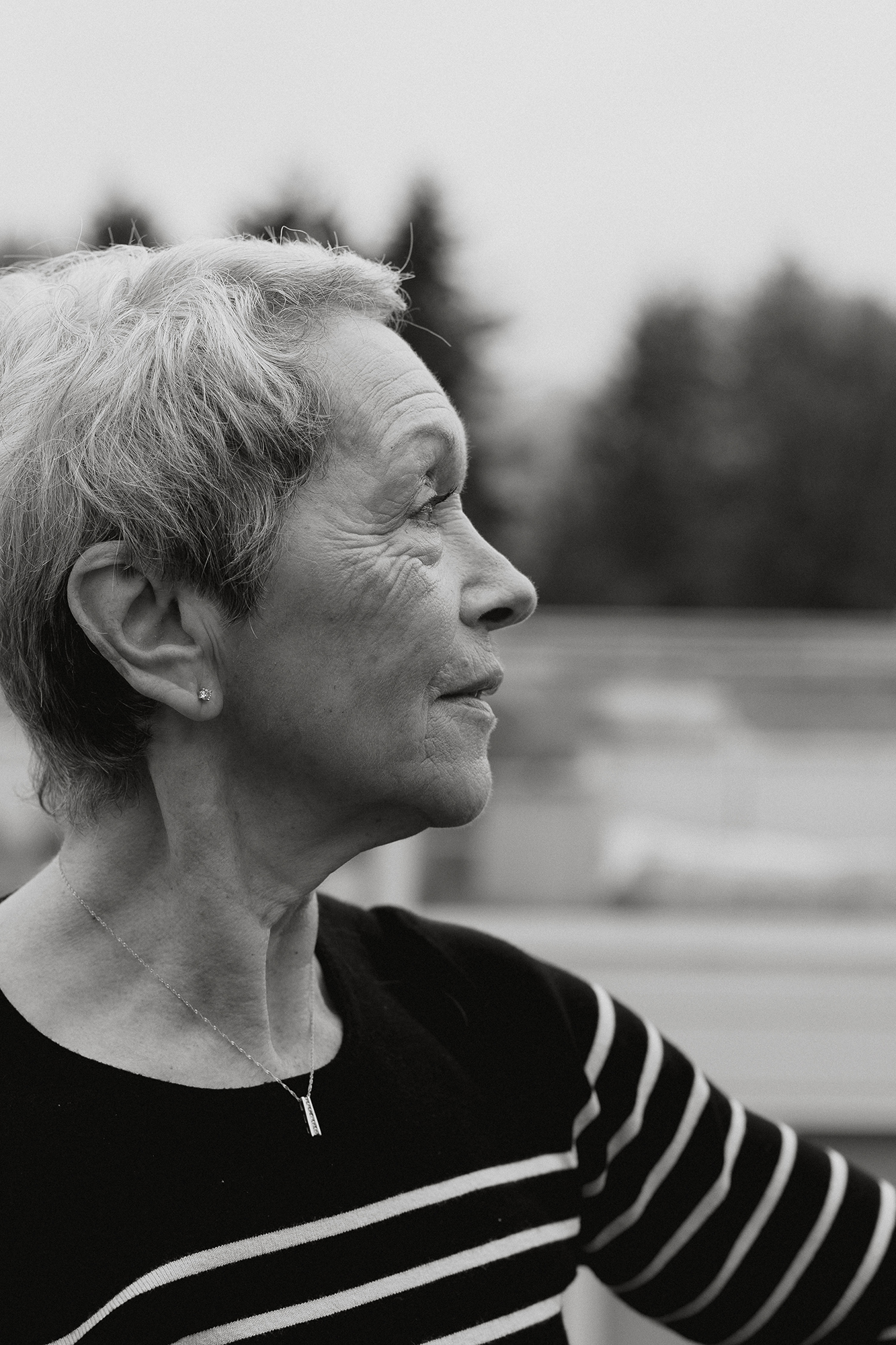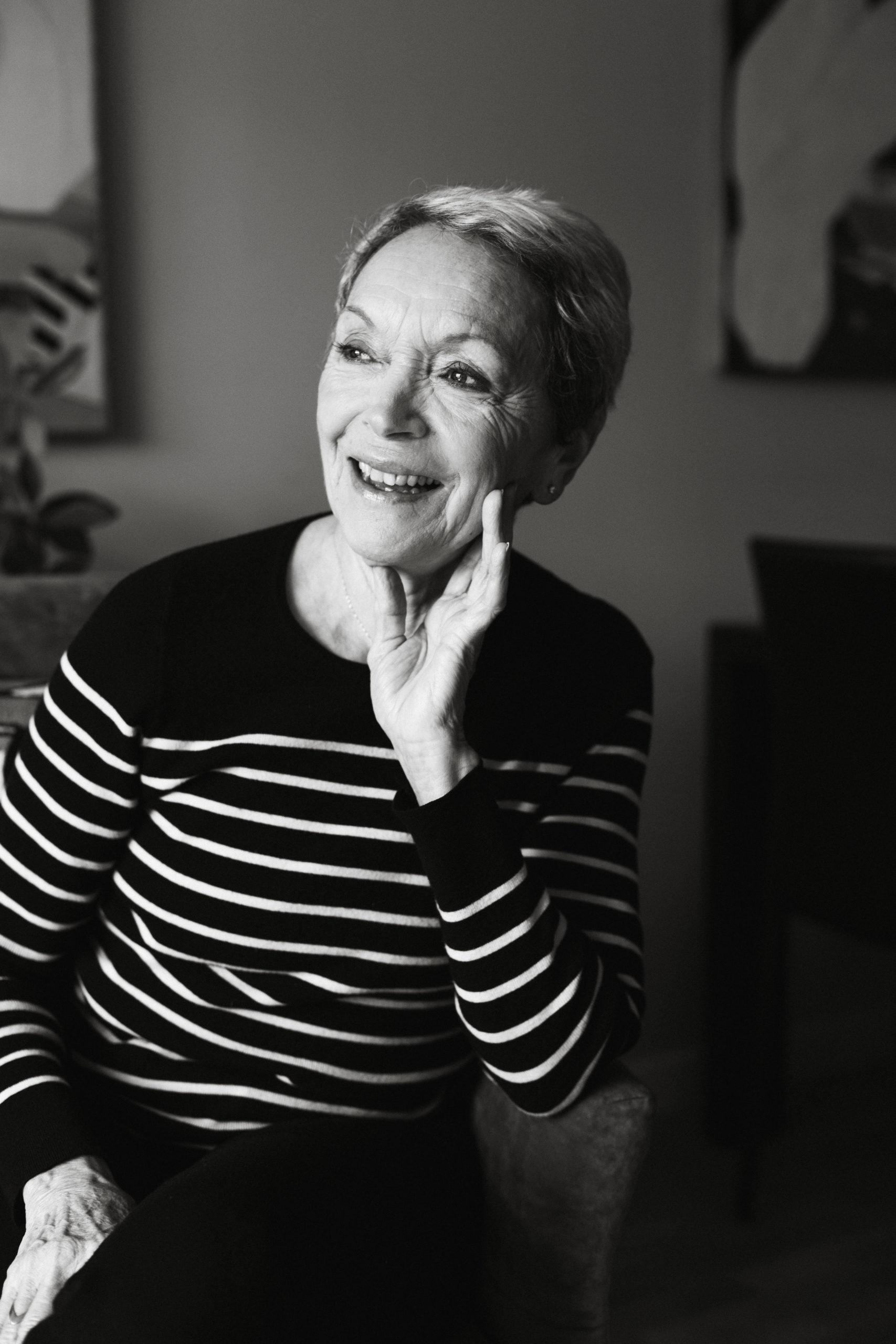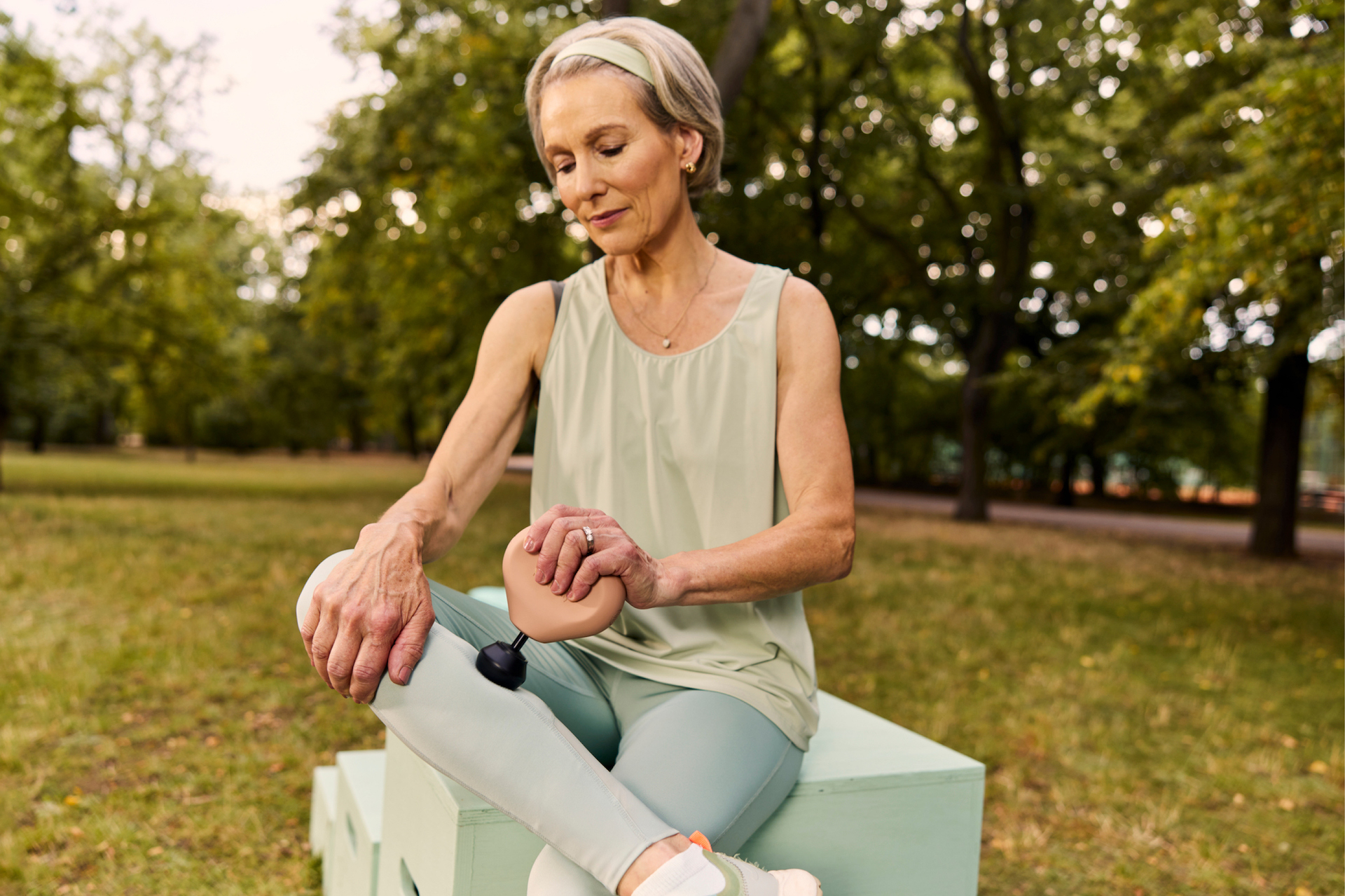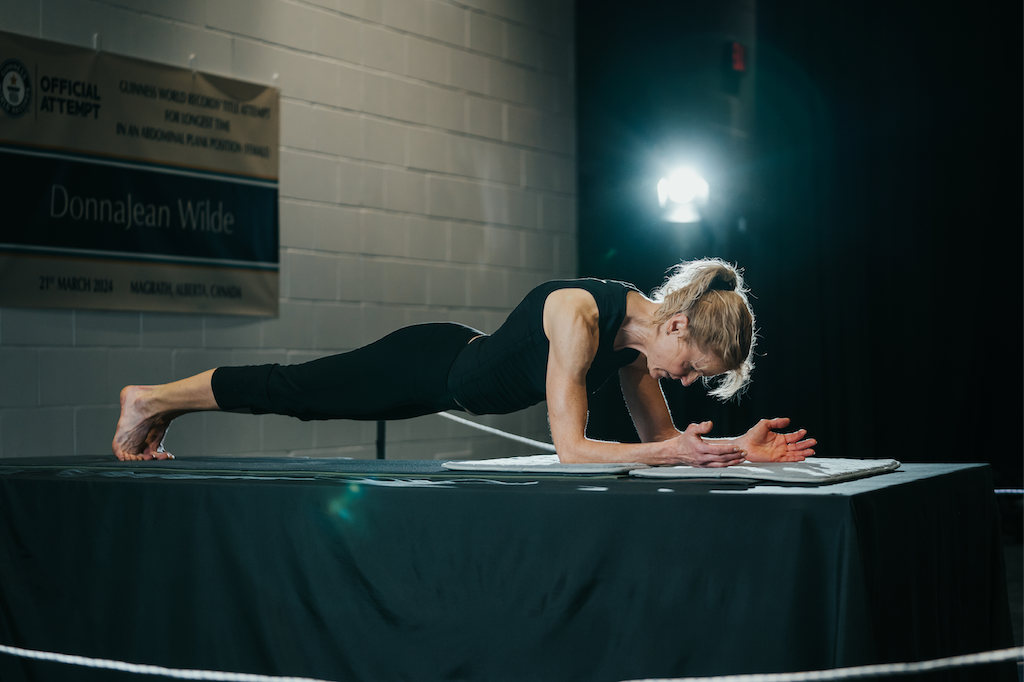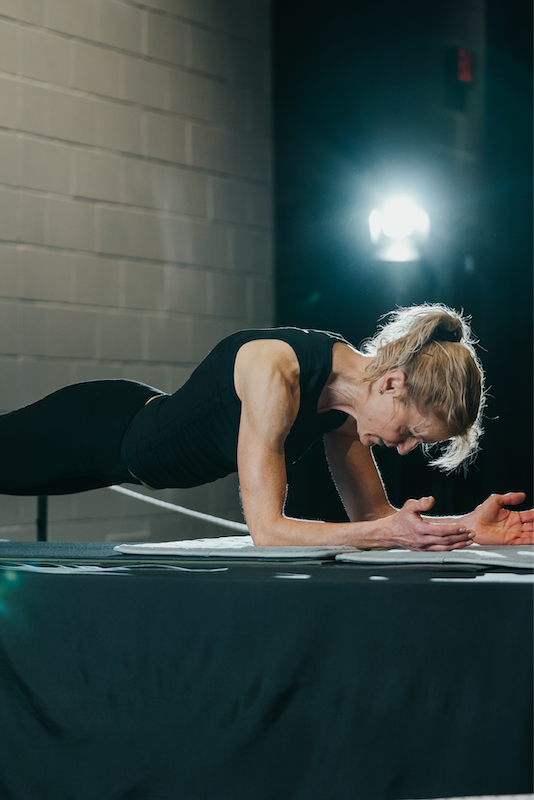The sound of Danielle Clifford’s elegant yet whimsical “bonjour” rings through Studio 2 of Harbour Dance Centre in Vancouver, where a few ballerinas are warming up for a morning “Ballet 3” class. Approachable as the name may sound, to participate meaningfully in such a class requires years of dedicated training. It shows in those currently in the studio. They have the unmistakable born-to-plié look that allows anyone to pick a dancer out of a crowd.
“Espagne! Yes, beautiful time to go.” Danielle embraces one of the mid-30s male students with familiarity and confidence. As she should. The 77-year old professional ballerina who grew up in the south of France co-founded Harbour Dance 34 years ago and has been teaching there ever since. Although she gave up her partnership shares a few years ago, Danielle still teaches several times a week. She seems to move outside of age, or at least how we normally conceive of it. Her self-assuredness puts her no younger than 77. Yet the strength and grace with which she moves about the studio is of a woman in her physical prime.
I’ve come to attend a ballet class with Danielle. Not Ballet 3. Or Ballet 2. Not even Ballet 1. Not Intro to Ballet. No, I’ve come for Absolute Beginner Ballet. Even still, I have a hard time keeping up. We plié, dégagé, and relevé through first, second, third, and fourth positions at the “barre” (literally holding the bar) before moving to the floor (movements done without the barre.) Things really fall apart for me at that point, but I do my best to learn a combination of steps and twirls while spending equal effort keeping myself somewhat hidden at the back of the class.
But Danielle’s warm smile and gentle encouragement makes me feel at home throughout. She loves beginners, hoping they’ll fall in love with the art form and movement practice that has grounded her entire life. Though it isn’t easy to pick up if you’ve started late (which, in ballet, seems to be over the age of 5), there is a quality of lightness and grace that you feel at the end of the class—even if you do miss half the steps.
Danielle creates a welcoming environment, warmly poking and prodding at students to stand tall, keep the correct arm position, not sway in the hips, and maintain a strong core and balance throughout. “Eyes! Where are your eyes? Look ahead. You don’t need to look at others. You know this. You won’t learn if you keep looking at others.” She knows her students well and isn’t afraid to push. Her teaching could be mistaken for stern, but her soft eyes betray her heart. In particular, she loves welcoming unlikely ballerinas into her class. Around me is a lanky mid-30s man with glasses and a lawyer’s posture; a girl in her late teens with a bodybuilder’s physique and a turquoise bodysuit; an older woman who smiles shyly when Danielle complements her technique; and a larger man in his 50s who wears a once-white t-shirt and smiles broadly, right in his element.
I introduce myself after class and we walk to a coffee shop around the corner from Harbour Dance, which is located on Vancouver’s Granville Street. During weekdays Granville is occupied by international students looking for a cheap slice of pizza, while on weekend nights is replete with high heels and miniskirts as the city’s small clubbing scene takes over.
She sits across from me with a medium chai tea latte (coffee only once per day—a cappuccino with her morning crossword.) She looks perfectly French. Her short, salt and pepper hair is neatly styled. She wears a striped, boat neck top and a unique coat purchased years ago in Barcelona that is now, somehow, perfectly on trend. (This, I believe, is one of a French woman’s superpowers.) Each piece of jewellery is minimal, intentional, and storied. Her diamond studded earrings are from an ex-lover. Her ring is a combination of a family heirloom and a piece of platinum she found while snorkelling in Hawaii. Her necklace is from a dear friend who lives in Japan. She most resembles a French Audrey Hepburn. She speaks with a strong accent and scrunches her nose slightly every time the music gets louder or the blender goes off in the coffee shop. Her imperfect grammar is undeniably charming.
“Ah,” she says, settling into her seat. “So, what would you like to know?”
We talk for hours about Danielle’s life. What was she like as a young girl? When did she fall in love with ballet? How did she end up in Vancouver, founding one of our best dance schools? Is ballet for everyone? And, of course, what are her secrets for living well at any age? On y va.
Danielle was born in Nice, a quaint seaside town in the South of France. “But in Cannes is where my life started,” she says. “My parents divorced. At that time this was a big shock. So, my mom moved to Cannes. And when I was a little girl I went to see The Red Shoes. I don’t know if you’ve seen the movie, but it was really, really not good. But I thought it was beautiful and I fell in love with ballet.”
The film, I later find out, is a 1948 British drama about a ballerina based on a fairy tale by Danish author Hans Christian Anderson. Far from a fairy tale life, Danielle was at the time hanging out on the streets of Cannes with her friends, beating up boys, and insisting on keeping her hair rebelliously short. Her mother, single and working, struggled to find the time and resources to put her in dance classes.
“Finally, my mother said, ‘we may as well put her in ballet because this is not possible’. The boys were coming to school with black eyes. I was really a tomboy. But I knew I wanted to do ballet. I found another girl who was going to the ballet school in Cannes and we started going together to a studio by the water. A woman named Nina Lopez would do a show at the casino every Wednesday where we would perform. I was about 11 at the time, which is very old to start ballet. But it was perfect because by age 15 all the other kids had had enough. But I wanted it. And I was taller so I would play the boys and get to do all the jumps, which I loved.”
By 17 years old, Danielle was dancing in her first ballet company. “In Grand Theatre de Nancy, I stayed for three years. By the end I was grand sujet [a high-ranking position within a company equivalent to a soloist]. We learned everything there. We did opera, ballet, all sort of different things. That taught me a lot. After three years I wanted to go back to Nice. A great ballet company there hired me right away.”
Danielle met her former husband when she was taking class to stay conditioned between ballet seasons. “He was visiting Nice from London and taking beginner ballet where I was training. Sometimes the teachers would bring all the students out for a big barbecue and we met there. The minute he opened his mouth—you know, it was The Beatles time—it’s so cute, this British accent. And he liked me and I liked him. And then, that was it.”
She gave birth to her first daughter, Sabine, in 1967, and after witnessing the civil unrest in France the following year, they were ready to make a big move. Her husband’s family had moved to Vancouver five years earlier and had been sending photos back to them.
“Sunshine, the beach, the mountains, the snow on the mountains, blue sky—always blue sky. I thought, ‘that looks really good, why don’t we try?’ So, with the money I made dancing we decide to come. I didn’t speak any English. I had one book my Godmother gave to me before I left. She said, ‘this is a good book, read it on the airplane.’ And the first lesson was, ‘My tailor is rich. My tailor is not rich.’ Well, with that I’m going to go very far!”
Danielle laughs, but I can only imagine the challenges she would have faced in 1970, alone in a foreign city with few opportunities for professional ballerinas, nursing a 2-year old daughter, and trying to make it through what was turning into a difficult marriage.
They ended up settling in North Vancouver. Danielle moved around to different companies for two years until her second daughter, Yasmine, was born in 1972. Then, she opened a studio in her house and began teaching people of all ages and backgrounds. “I started to teach kids and I really, really didn’t enjoy that. They were all over the place! They had no discipline.” She also taught figure skaters and synchronized swimmers, bestowing different disciplines of performance with a touch of ballet grace. Many others heard about “the ballerina from France” and wanted to learn from her.
 Danielle Clifford is a co-founder and ballet teacher at Harbour Dance Centre in Vancouver, Canada.
Danielle Clifford is a co-founder and ballet teacher at Harbour Dance Centre in Vancouver, Canada.
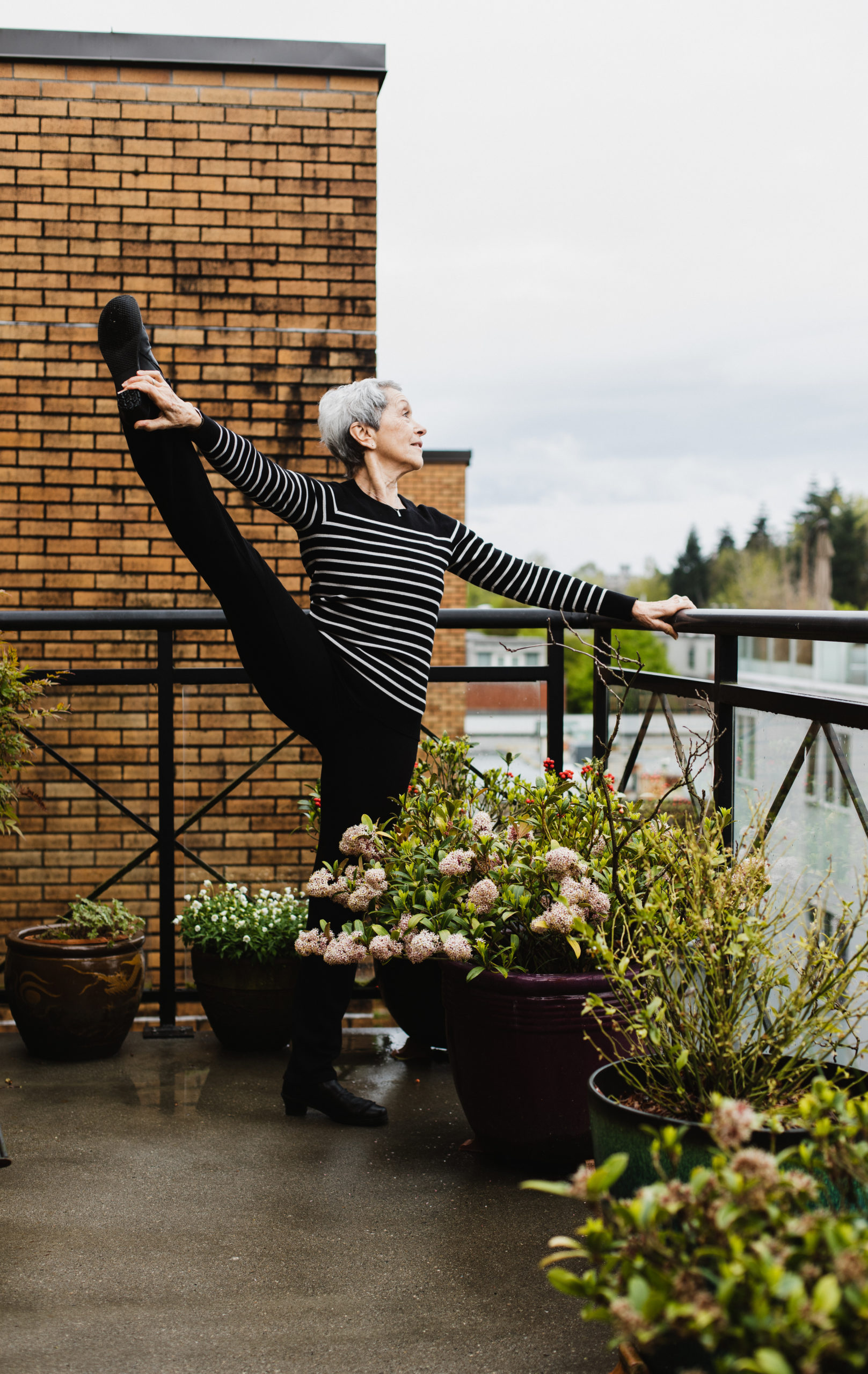
Danielle met Harbour Dance co-founder Pamela Rosa during this time. Pamela took classes from Danielle nearly every day in her early teens. By the time she was 16 years old, she started teaching jazz, her primary genre, in Danielle’s home studio. Pamela recounts this time happily, “we never thought at that point that we’d be together our whole lives, but it kind of just ended up that way.” They eventually had the opportunity to buy a dance studio together, and Harbour Dance was born in its first location facing Harbour Centre on Hastings Street. Hence the name. The family moved to Kitsilano and Danielle poured herself into teaching and growing the studio with Pamela, who Danielle credits as being the one whose vision really made Harbour Dance into the school that it is today.
This rosy chapter soon ended, though: “We had a beautiful house, good jobs—everything was perfect. The kids were good. Good students. Everything was good. Then boof: ‘I’m leaving you.’
Danielle’s husband left for another woman. “I had a 7 and a 12 years old. So that was hard. I couldn’t sleep. I couldn’t eat. But because of dancing and because of my friends’ support, I carry on to do what I love—this saved my life.” Danielle assures me that even this dark time had a happy ending: “Now we are good friends. The best friends.”
It is uncommon in our culture to celebrate the independence of older women. Inspiring stories of women who choose to live alone are rare. Rather, the independent older woman almost always falls into the archetype of an “old maid” or “spinster.” Danielle, sitting in front of me with the radiance of someone in her twenties and a tendency to prance around the dance studio with much élan, could not be further from this image.
Danielle is forging her own path. She knows what she wants and doesn’t want. She has her routines, her apartment, her annual trips to Europe, her (strong) opinions on art, dance, and culture, and the deeply feeling heart of an artist.
“My secret is to be happy, really.” Danielle reflects to me.
She brings this attitude to her teaching. “I give [students] permission to smile. I want them to relax and feel good about themselves.” “But also be disciplined?” I ask. “Ah, oui.” Of course.
This in no way means that Danielle only wants to teach gifted dancers. “If I see in the eyes she really want to learn and she listen and try, I say ‘Bravo!’ I love when you really, really enjoy ballet. You don’t have to be a super ballerina but if you try to do your best, I open my arms. You’re mine.”
Danielle also has no problem refusing students if they don’t have a strong foundation: “I tell them, ‘This is not your class. You have to start at the beginning.’ And they get upset. They go up to the desk and hmph! But you have to be patient to learn A, B, C before going to X, Y, Z. It’s just like school. When you learn something you have to learn from the beginning. You can’t go into a middle level thinking ‘I’ve done some dance in the club, I can do ballet.’ Non.”
This is an important lesson, though. How often do we force our way into quantitative progress (moving from Ballet 1 to Ballet 2, moving up the corporate ladder, moving to a bigger house, buying a nicer car) without spending time on our foundations? Without looking at the heart and purpose behind what we are doing? If we spend time learning the foundations of ballet, progress comes faster. If we spend time on our foundations in life, does it have the same impact? Why do we care so much about going as quickly as possible from 1 to 2 to 3 but neglect looking at our foundation: our values, our purpose, our gifts and skills?
Excited by this insight, I ask how she inspires people to stick with the foundations. “No, they don’t come to my class,” she says, laughing. I suppose the motivation has to be intrinsic.
Danielle is passionate about the obvious impact that ballet training can have on students’ life outside the studio. “I really have a lot of students that don’t know right from left. Some come and they have no coordination. I say, ‘Come on! You can do it. Don’t be shy.’ And I think they feel better. That’s what I love. To teach to stand up tall. People come and they are like this [she hunches forward dramatically]. The way you hold your head. Everything. Your posture. It really impacts you. So many people are like this at the front of the computer. A lot of students start very reluctantly and then they find that they like it. In their life, you change something.”
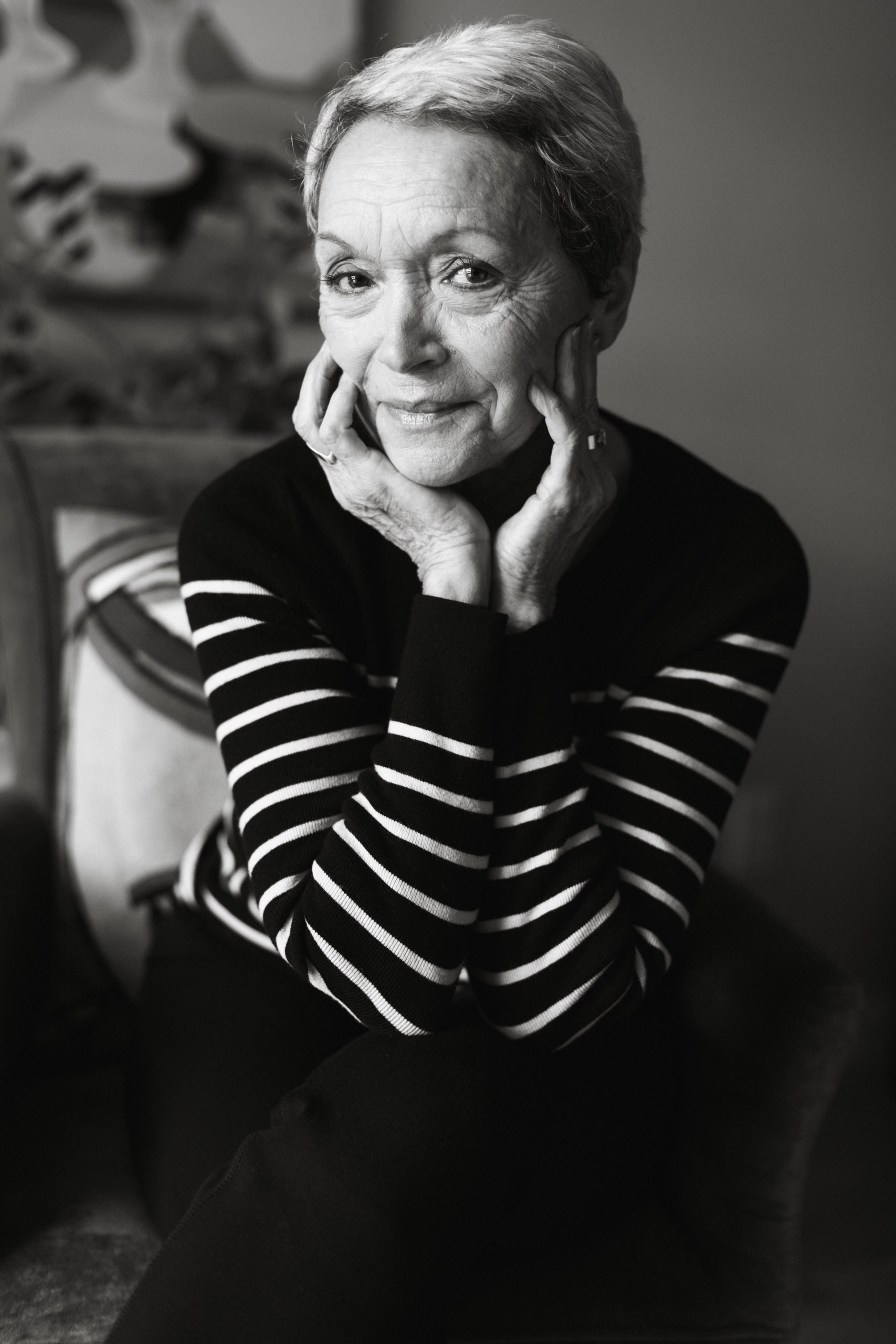
Danielle is undoubtedly a strong teacher, but she is truly welcoming to all. “She teaches the technique very well but she also wants you to enjoy the class. She gets you to sing or she tells jokes and I think that’s so important. Ballet is obviously a serious dance form but it has to be fun too, you have to want to do it.” Harbour Dance co-founder Pamela reflects on Danielle’s style and ability to engage with beginners in a fun way. This reflects Harbour Dance’s overall philosophy, as Pamela tells me: “We adapt everything to what students can do. We just make it work for everyone. I teach in care homes, too—students of all ages.” Truly, anyone can dance.
Bringing the gift of dance to students of all levels is what keeps Danielle going. “When I sold the shares in Harbour I thought, I’m finished. And then I was home and I thought, what do I do? I started to teach two classes a week. And that was not enough. I was really bored. So now I’m supposed to teach four class. Which is OK. But this week I’m teaching seven. I’m happy. I love my home, it’s my nest. But I talk to the wall, I talk to myself? Non. I teach.”
Danielle has strong routines to support her continuing to do what she loves, especially her mornings. “Every morning: Water in the cappuccino machine. Turn it on. Then I go to the radio and put classical music on. A station from Seattle that has classical music the whole day. And they talk about the weather. Then I go get my newspaper downstairs. Every morning I do my crossword in the Vancouver Sun, drinking my cappuccino. And I eat a whole bowl of oatmeal with blueberry and raspberry and I eat a banana. No matter where I am—here, France, wherever. Usually I do a stretch. I go flat on the floor because it’s good for your back and do some exercise. After that, I start my day. There is always something to do.”
Danielle’s passion is an inspiration to those around her. As Pamela tells me, “Danielle just loves teaching, she always has. And she is always my inspiration to keep going. Because obviously we all have aches and pains as we get older and sometimes it’s hard to start moving. But ten minutes into class you feel great, and you come out feeling great. Danielle still teaches a ton of classes. She often does eight classes a week. Which is a lot, and they’re hardcore classes. She inspires a lot of people, and I don’t know if she knows that. I hope she does know.”
It isn’t just the fact that she keeps going, it is her attitude. “She’s never in a bad mood. I have never seen Danielle in a bad mood. She’s always up. I’m trying to follow in her footsteps a little bit, how she lives her life. She has a really good philosophy on everything and she’s very positive. She’s always looked at everything very positively.”
Danielle sums up her philosophy this way: “Negative kill you. Be positive.” Another thing that kills you? Stopping. “Don’t stop. If you stop you can’t do it anymore. That’s why I don’t stop. You see people retire and then they die. To me, if I retire completely, that’s it. Keep doing what you love. If you stop, you die.”
At the end of our time together, I want to frame the 77-year old ballerina’s recipe for living well: Start at the beginning, stand up tall, don’t neglect your foundations, stay positive, and never stop. Oh, and always eat breakfast.
